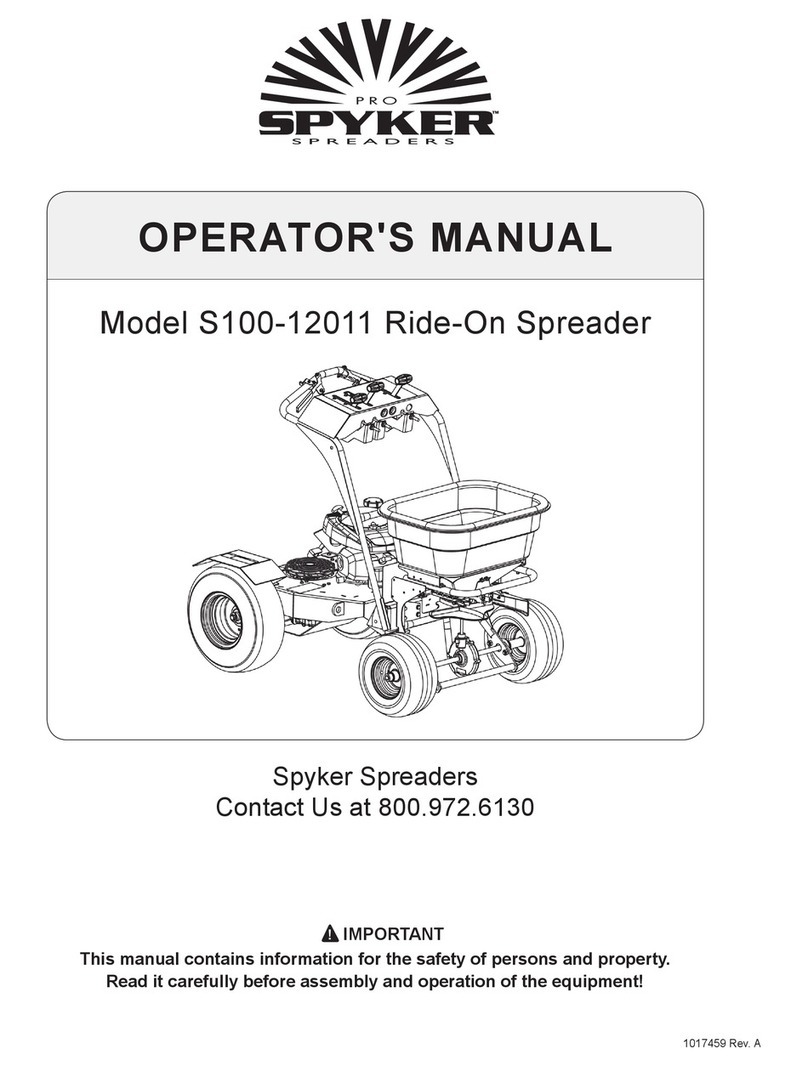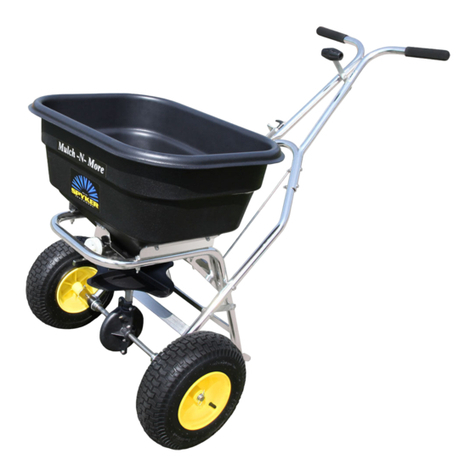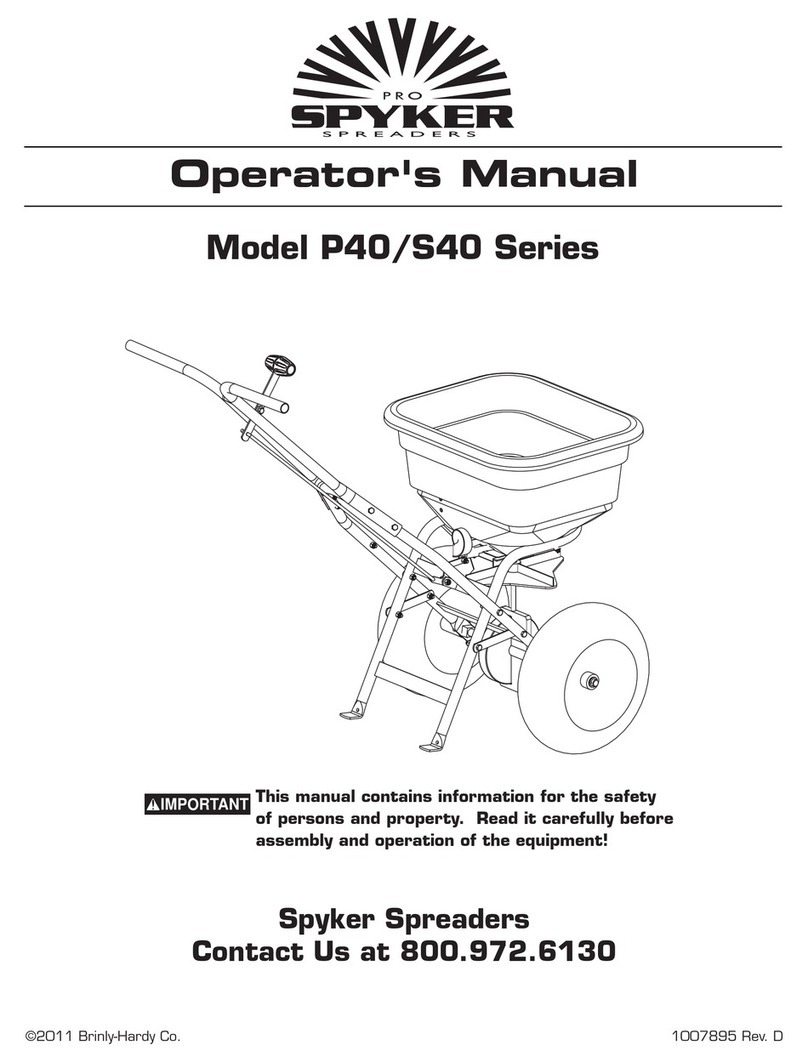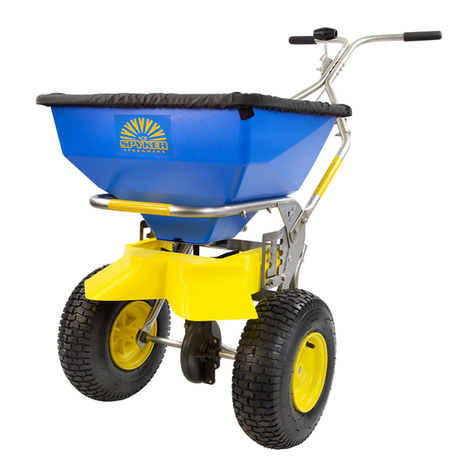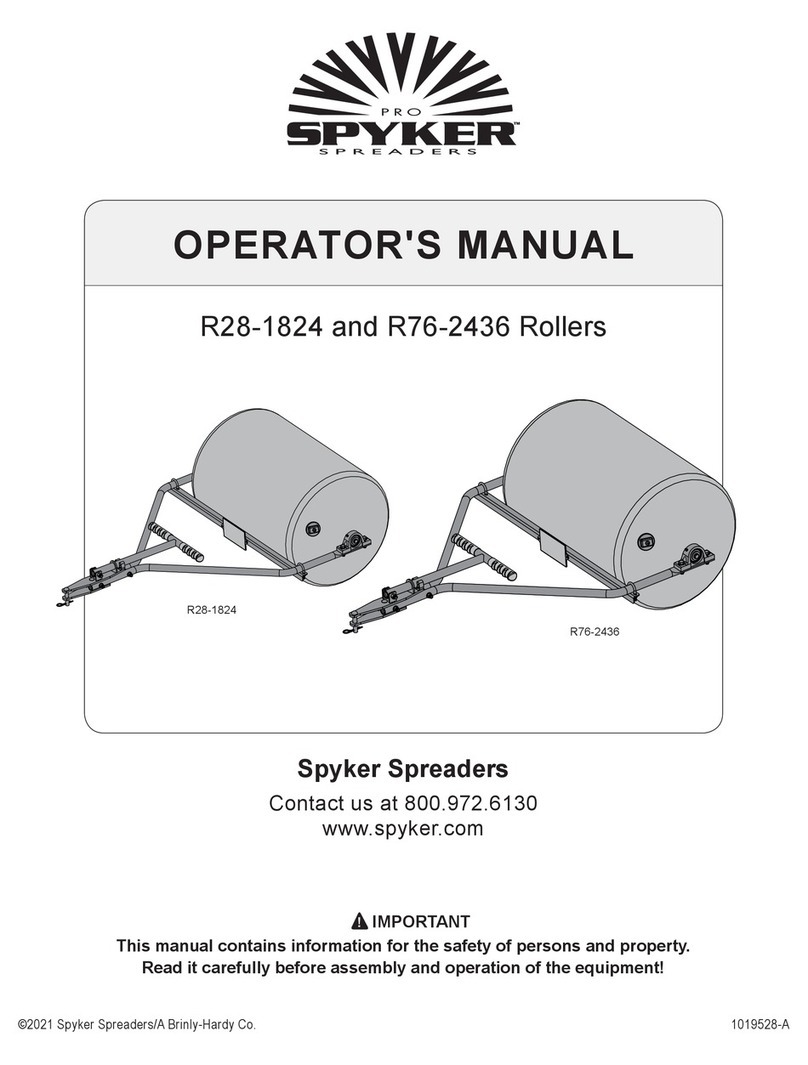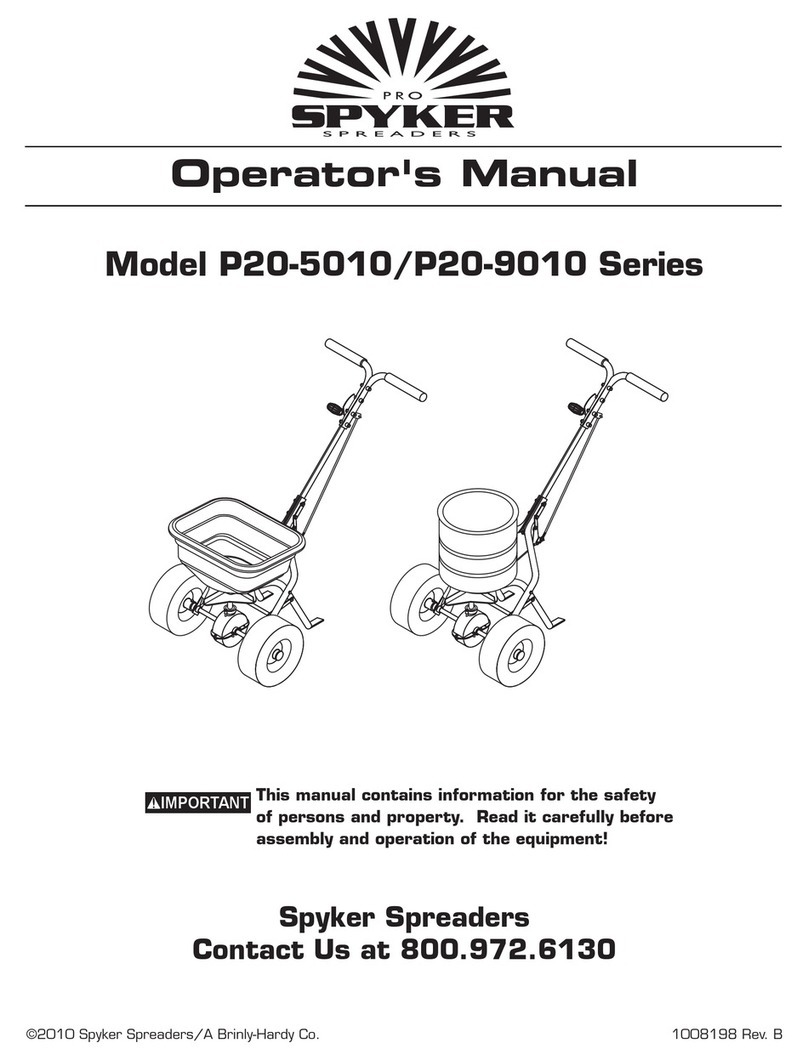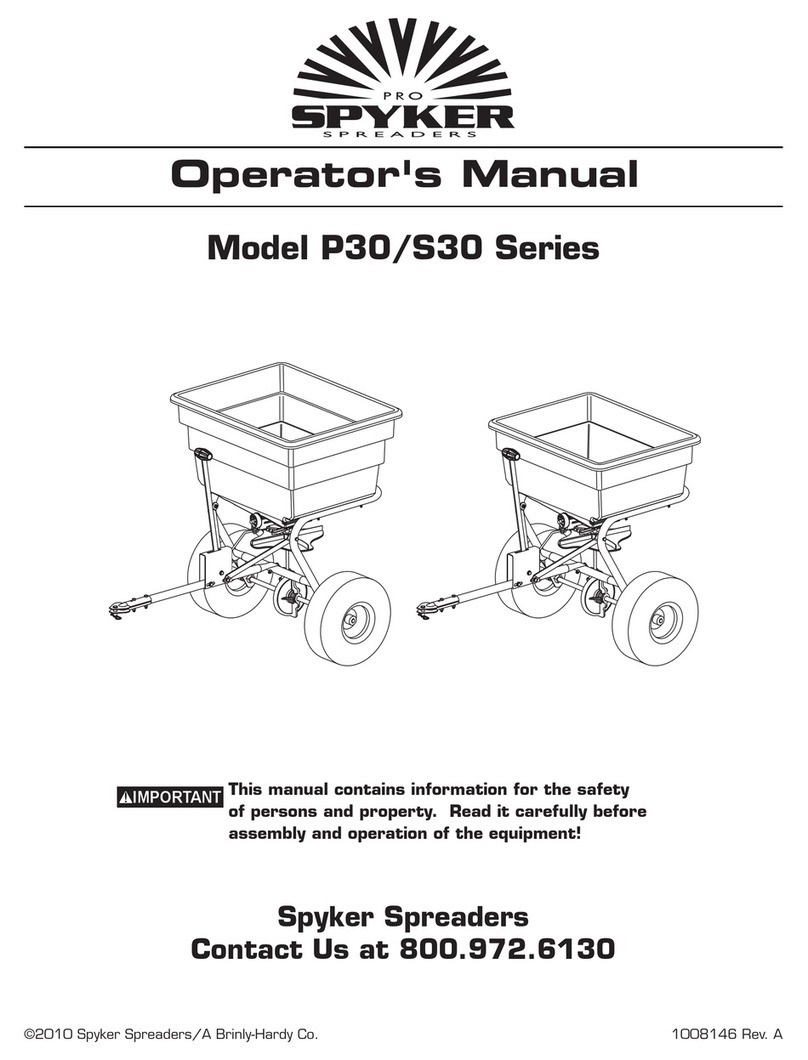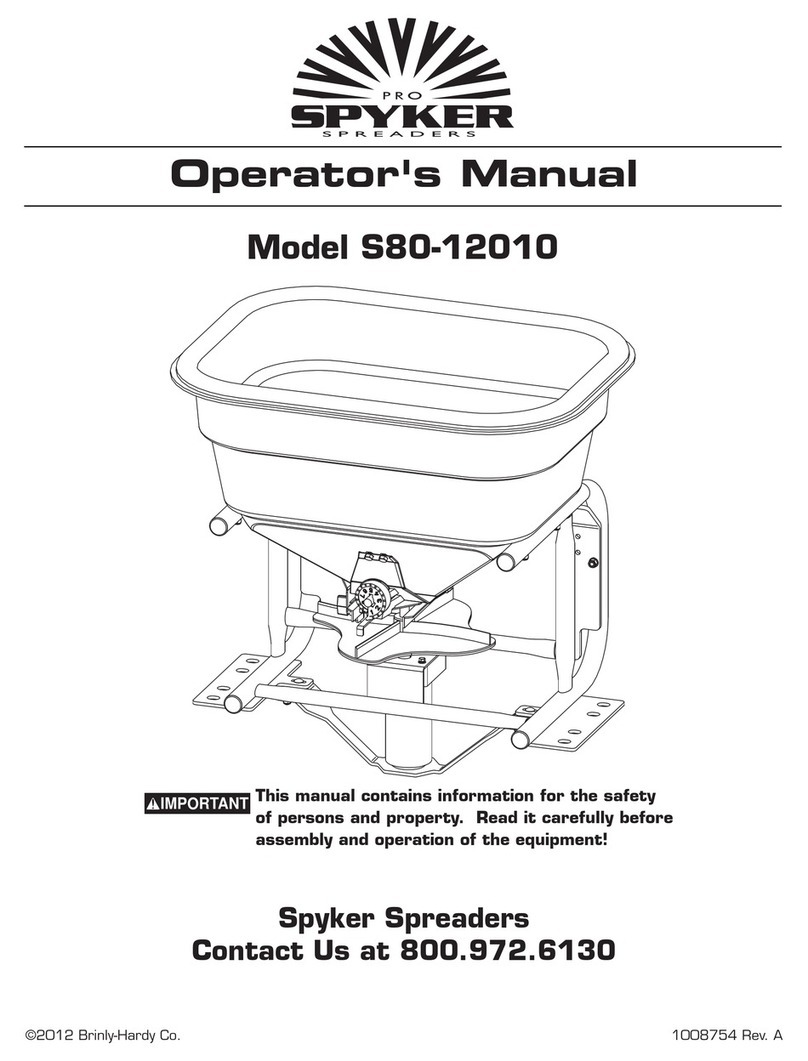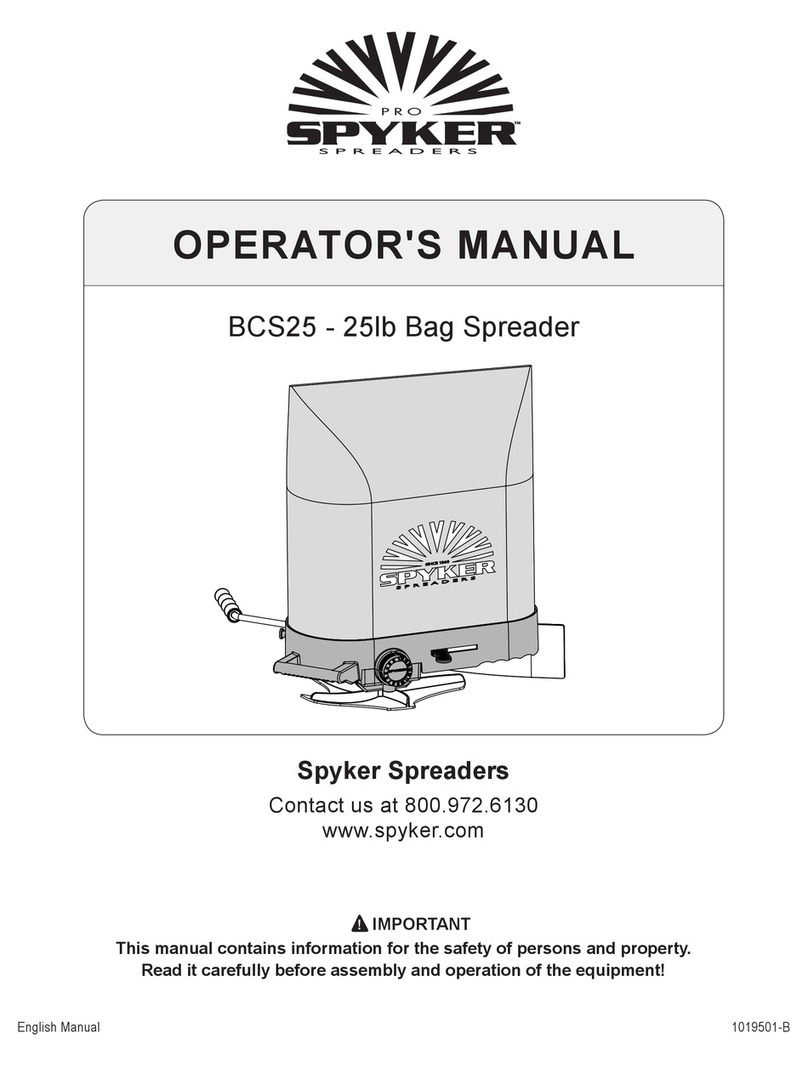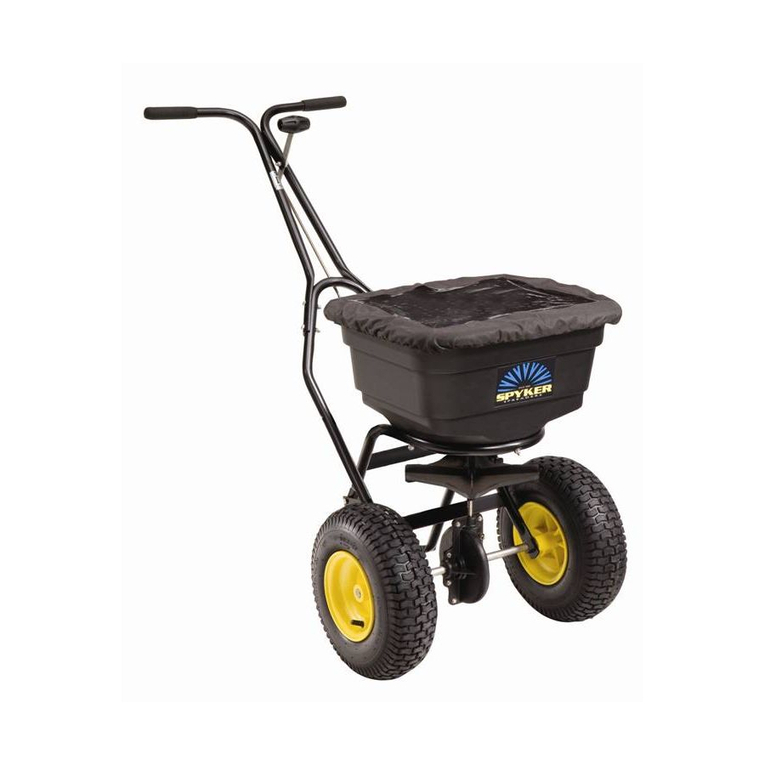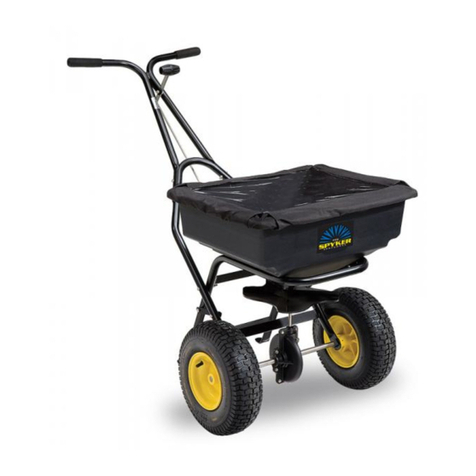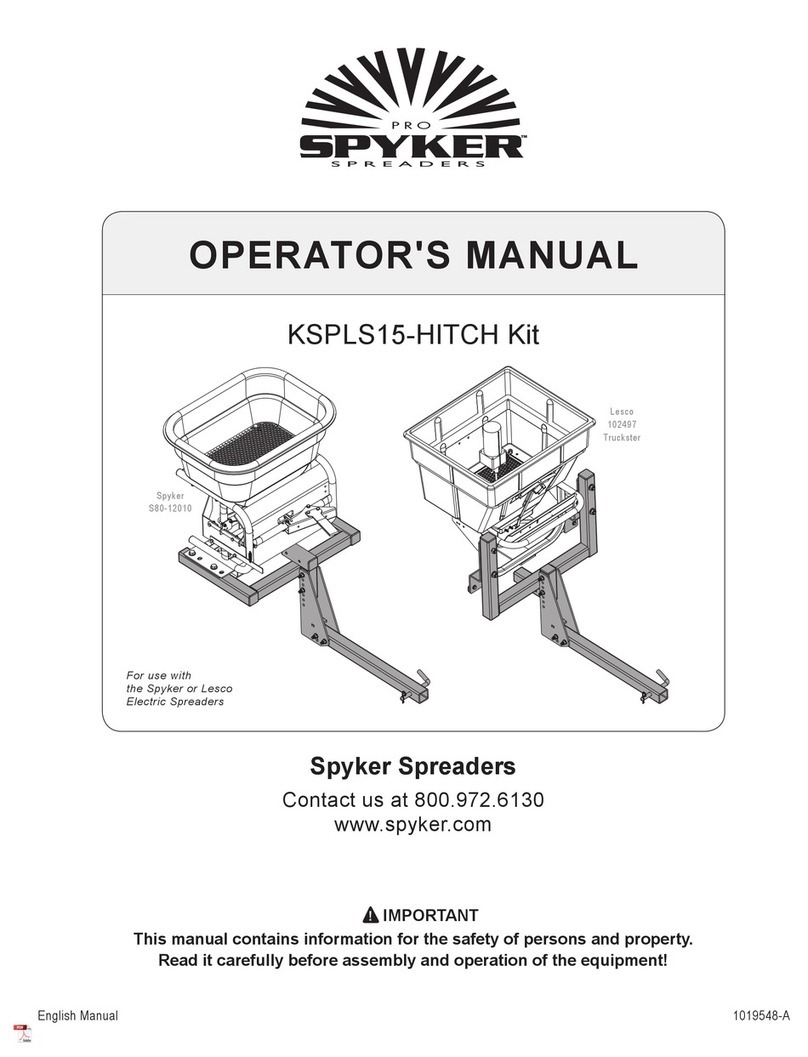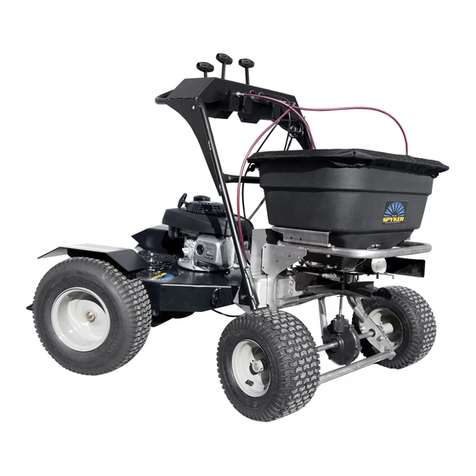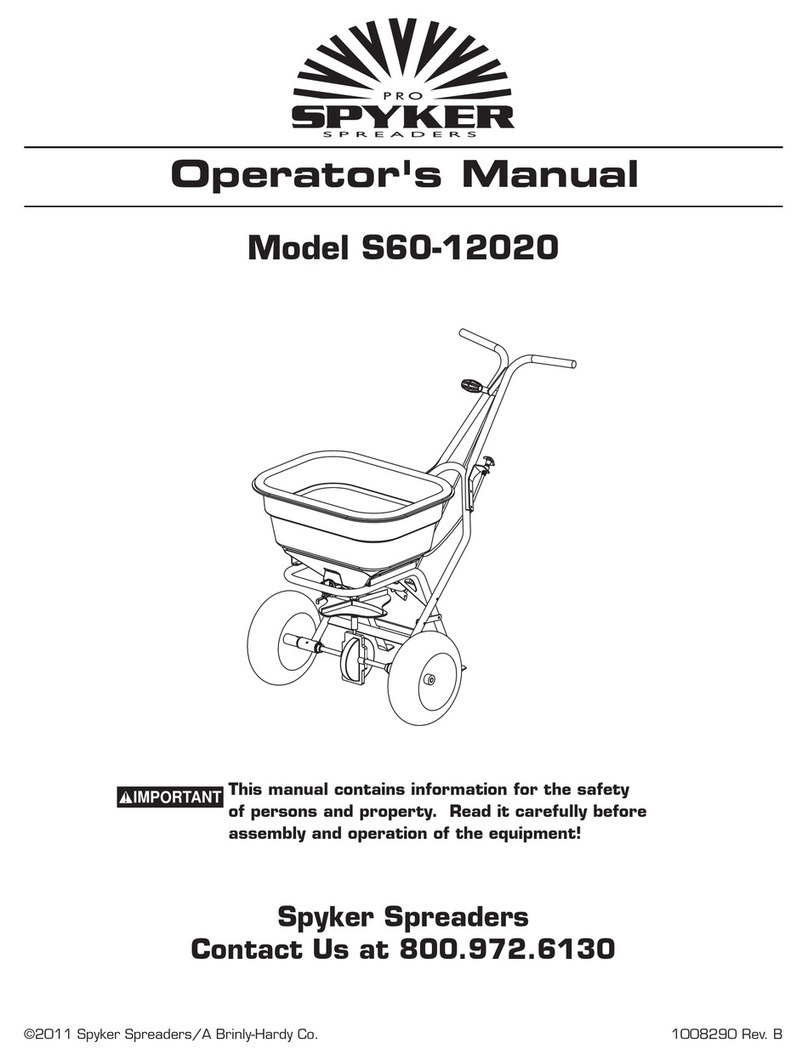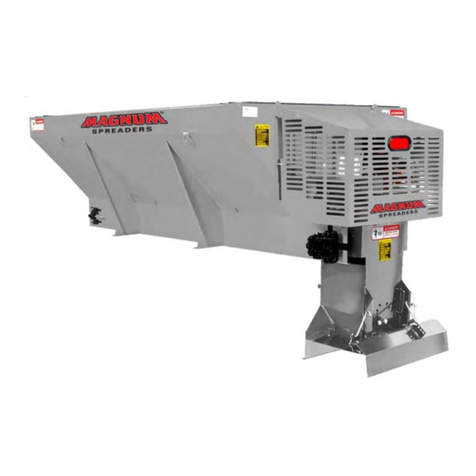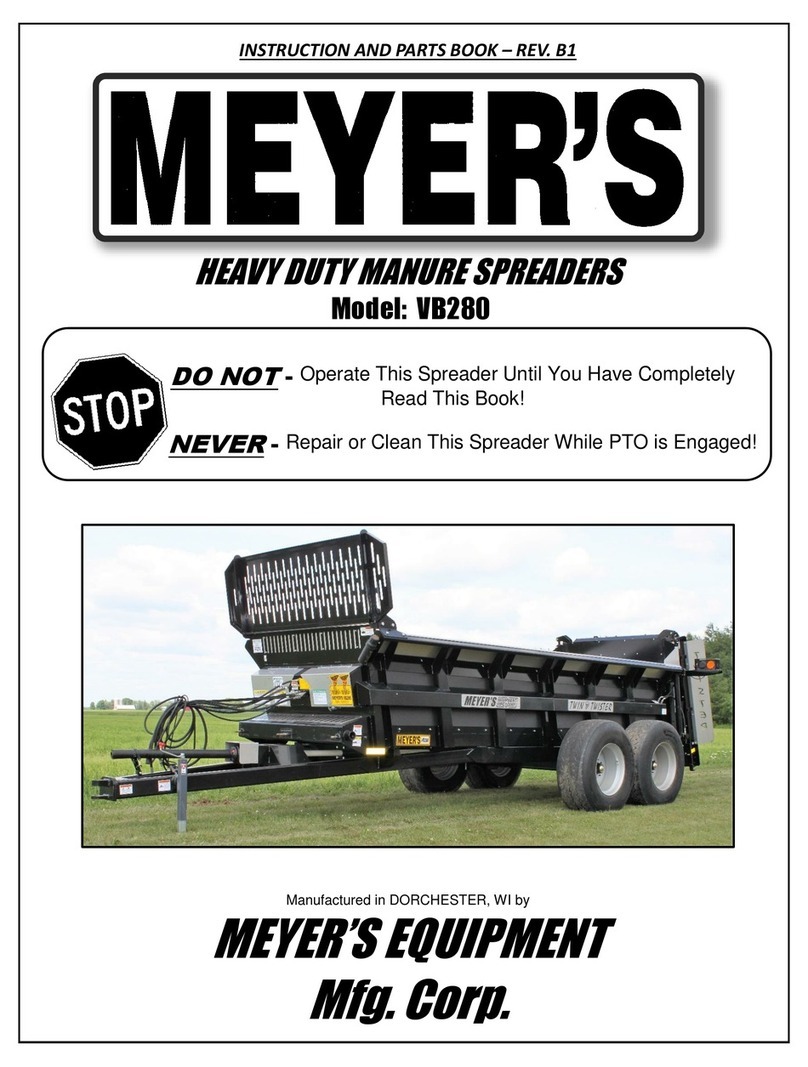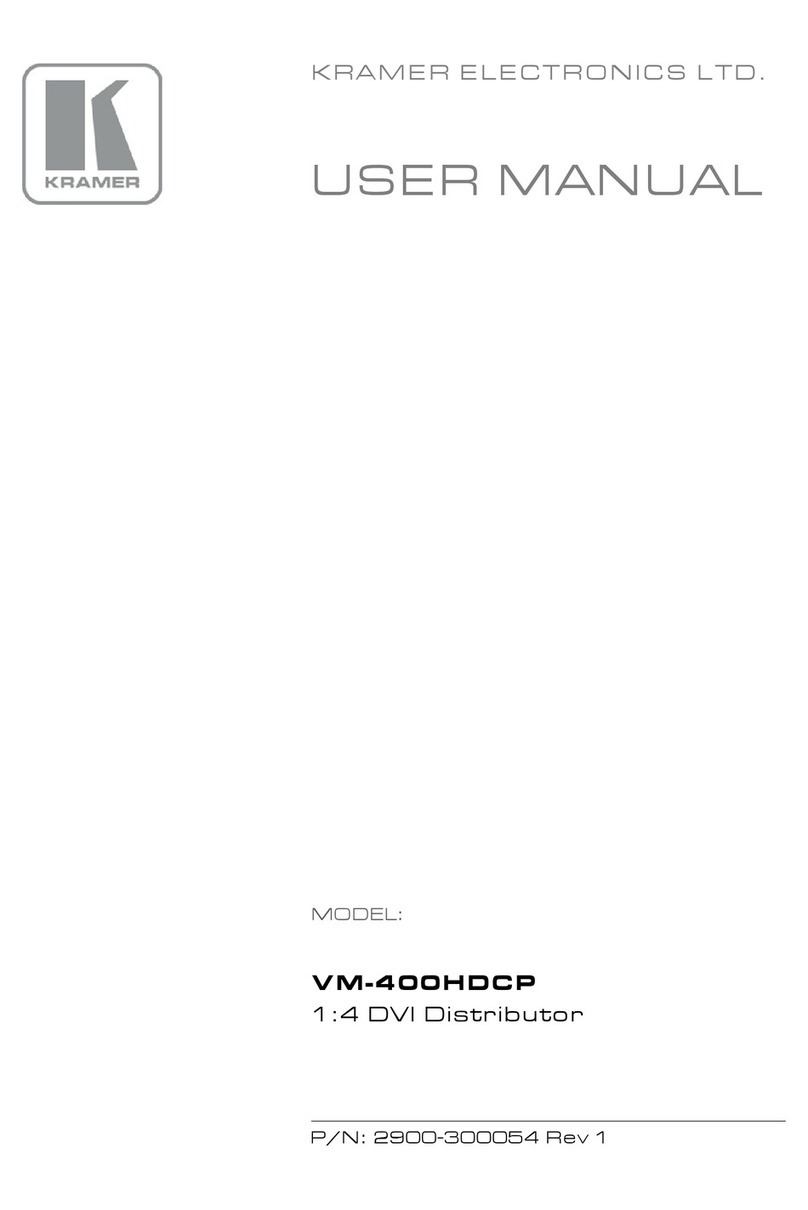
1009104 Rev. A
©2012 Brinly-Hardy Co. 7
CAUTION: Machine may coast when
coming to stop. Always ensure there is
enough clear space around machine to
allow machine to come to a complete stop
without contacting anything.
9. Before moving into reverse, the machine's forward motion
should be completely stopped.
10. Pull the Rearward Ground Speed Lever to move machine
rearward. The further the lever is pulled, the faster the
machine travels.
11. While driving forward, practice using the Speed Control
Lever. Using the RH thumb, rotate the Speed Control
Lever to "Application Speed". This should be approximately
3 mph for spreading material.
WARNING: Do not spread at full speed.
Set the Forward Ground Speed Control
levers at full speed for transport only.
12. Practice operating the machine and as you gain
confidence, move the speed control lever to two thirds full
speed. Operate the machine until you are comfortable and
confident with the controls.
13. To stop and shut off the machine, release both direction
control levers, move the engine ON/OFF switch to "off"
to stop the engine, close the fuel shutoff valve, and
disconnect the spark plug wire.
14. After the first full day of use, all nuts, bolts and screws
should be rechecked for proper tightness and the belt
should be rechecked for proper tension.
MAINTENANCE
WARNING: Disconnect the spark
plug wire to prevent the engine
from accidentally starting before
performing any maintenance on this
machine.
A. General Maintenance
1. Never allow untrained personnel to service machine.
2. If the machine must be tipped on its side for maintenance,
do not tip more than 45 degrees. This will prevent
hydraulic oil from draining out of the Transmission
Hydraulic Tank Breather Cap. Before tipping machine,
drain the fuel from the fuel tank, and the oil from the
engine’s crankcase.
3. Be careful not to spill oil on any of the belts.
4. Ensure unit is properly supported by jack stands.
5. Do not tamper with the engine’s governor settings. They
are adjusted to provide the proper maximum engine speed.
6. If the machine is to be in storage for more than 30 days,
drain the fuel tank, run the engine to drain the carburetor
dry, change the oil, remove the spark plug and pour a
teaspoonful of oil into the cylinder. Pull the starter rope
briefly to crank the engine and distribute the oil, then
replace the spark plug.
7. Keep all parts in good working condition and all hardware
tightened. Replace all worn or damaged decals.
B. Daily Maintenance and Storage After Spreading
1. Park the machine on level ground outside the storage
facility with the engine shut off.
2. Close the fuel shutoff valve.
3. Permit the machine to cool.
4. Disconnect the spark plug wire.
5. Wash the machine off with water. Be sure to clean out
materials from under the hopper. Allow the machine to dry
before storing.
6. Check the fuel level, the engine oil level and clean the
cooling-air intake.
7. Clean air cleaner element.
8. After the first 20 hours of use, change the engine oil.
(Change the oil every 50 hours thereafter).
9. Follow the Maintenance Table found in the engine manual.
10. Place the machine in locked storage to avoid tampering or
use by an untrained operator. Do not store near flame.
C. Maintenance Every 50 Hours
1. Change the engine oil. (Change the engine oil more
frequently under severe operating conditions).
2. Clean spark plug and check the spark plug gap.
3. Clean air cleaner element.
4. Check that all nuts, bolts and screws are tight.
5. Check the condition and tension of trans-axle belt. The
idler pulley should be adjusted so that a 5 lb. pull on the
belt between the engine pulley and the pump pulley deflects
the belt about 3/16”.
NOTE: It may be necessary to remove the skid plate and
skid plate hardware to properly adjust the idler pulley. If
the skid plate is removed, save the hardware and skid
plate for replacement after the adjustment is complete.
Skid Plate Hardware
Figure 7
Skid Plate
(lightly shaded)
Skid Plate Hardware
Belt
Idler Pulley
